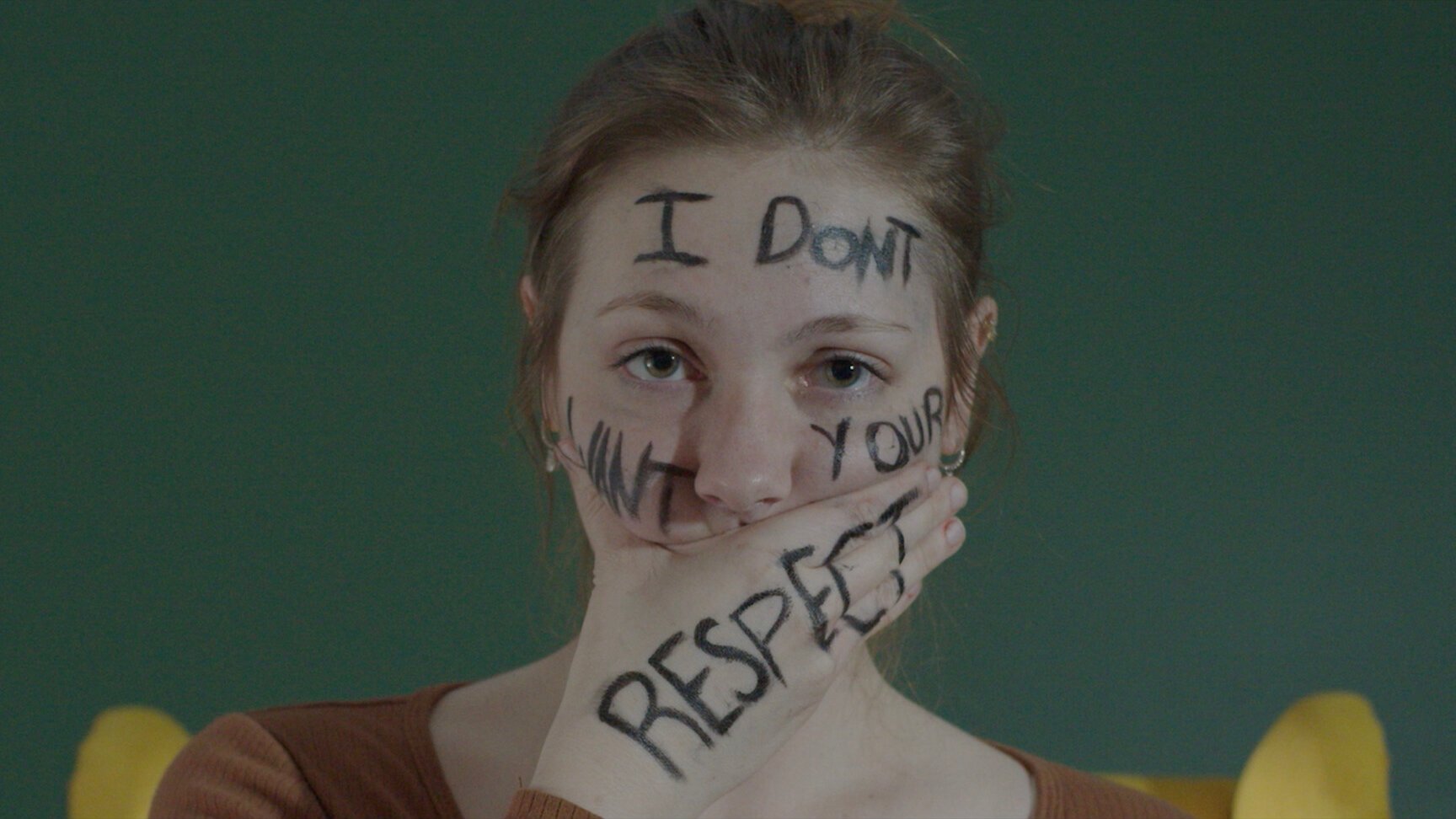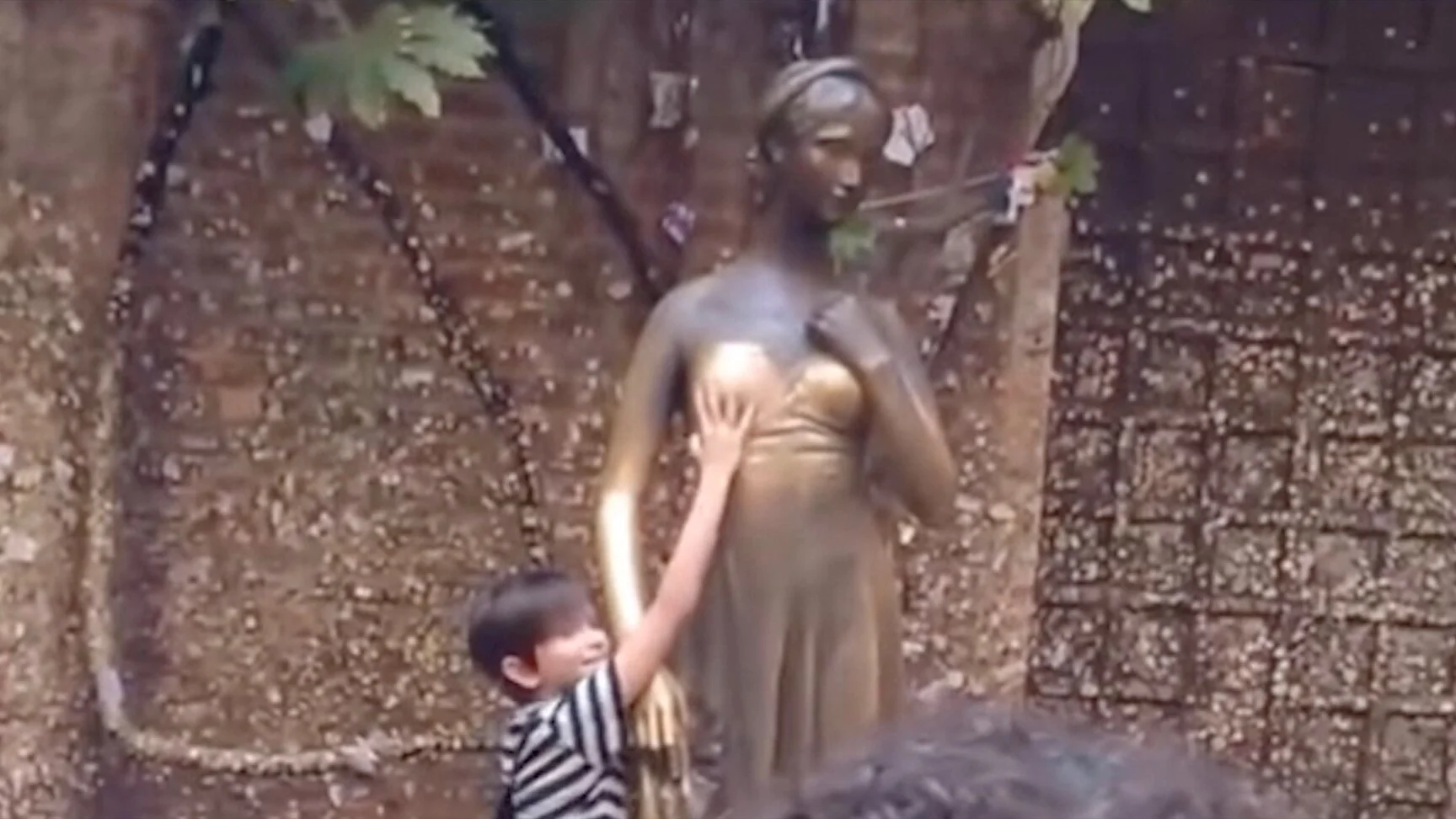
Best Student Film
WINNER (2024)
i don’t want your respect
Directed by Charlee Van Poppel (U.S.)
Interview with Charlee Van Poppel
Synopsis: An experimental film comparing the way people treat historic monuments and the way people treat other people.
IAG: Before we get into the film, tell me about your path is a filmmaker. What brought you into this world, and where do stand today?
CVP: Film was something I wandered into more or less. I started college as a business student and quickly learned that wasn't where I wanted to stay, so I took a film class to see what it was like. Something clicked, and I never looked back. Now, I am a Senior at the University of Tampa pursuing a BFA in Film and Media Arts and a BA in Visual Arts.
IAG: I have to say, the footage of crowds of people literally groping old statues was shocking. But then it got me thinking: have I ever done that? I don't specifically remember having done it, but I can't be sure that I haven't. Then it got me thinking about why is it so tempting (and seemingly socially acceptable) to do that? What’s your explanation for this phenomenon?
CVP: When it comes to the large groups of people groping old statues, it is quite shocking to see, I admit. As for why it happens, I think there are a few factors, starting, of course, with the superstition behind these monuments. As it says in the film, when a person touches the statues of Juliet, Molly Malone, and Victor Noir, there are promises of love, fortune, and fertility. Some may play into these beliefs and want to participate. I think that might be amplified by peer pressure. For example, If you are in a crowd, waiting your turn to see this statue and watching everyone before you do something rather sexual, would you follow their example? Or would you feel left out if you did not act accordingly? Finally, I think there is just an element of separation when it comes to statues, but that still represents a real person who once lived and breathed.
IAG: Technically, I like what you did to keep this film engaging—the strobe-style cuts, intercutting footage of the statues with comparable shots of the actors, the no-nonsense voiceover commentary, and—best of all—the "You Make Me Wanna Shout" montage at the end. How did you decide on this approach?
CVP: When I came up with the idea, it started just a general disgust for what I had seen done to these sculptures. Then, I began comparing it to how people treat others in society. These people grope statues in front of dozens of witnesses and no one says anything, everyone just continues. Sexual assault is something that happens in our society. Not only that, but it is common in our society, and it does not discriminate against men, women, or children. Yet, in some cases, no one says anything. So, my goal for the film was to break the barrier between the statue and the person. By using the strobe-style cuts, the audience sees images of people posing with statues at the same time as real living people experiencing similar treatment as their bronze counterparts. The "You Make Me Wanna Shout" montage at the end was kind of a representation of my frustration and anger surrounding all of this. Frustration at the treatment of these statues, at the fact that it has become acceptable to do that, and at the fact that people will treat others the way they treat those statues.
IAG: What’s your next film project?
CVP: As I work towards completing my degree, my next film will be part of an independent study. I am still experimenting with style and genre and plan to focus on the story of a young man battling the current economy and willing to do whatever it takes for the exposure of his work and art.
IAG: Lastly, what are three films or filmmakers that have strongly influenced your work?
CVP: There were a few inspirations for this piece, the first of which was Paul Bush and his stop-motion animation "Ride." That was a film I saw in my very first film class and it stuck with me. Jodie Mack is another filmmaker with some amazing stop-motion animations. I had an incredible opportunity to work with Jodie and was impressed with her process. Finally, Yvonne Rainer and her narration style was something that I thought worked well and wanted to incorporate.

